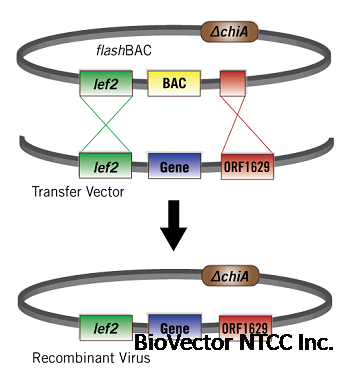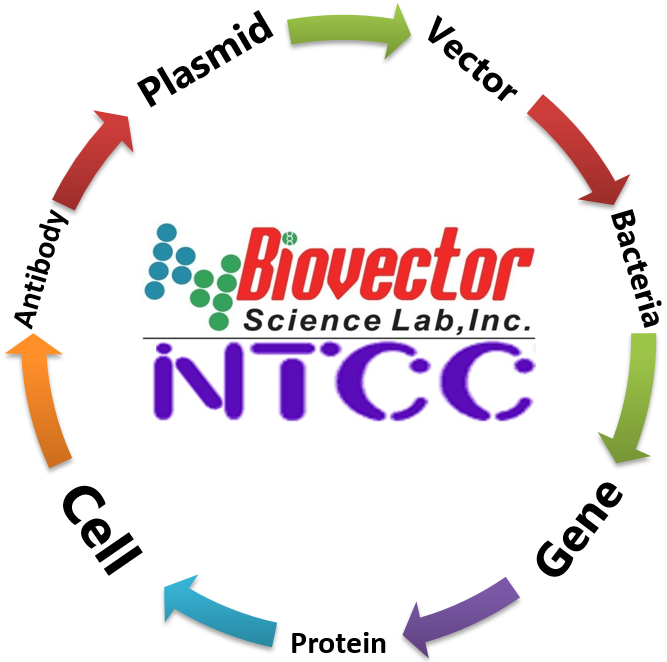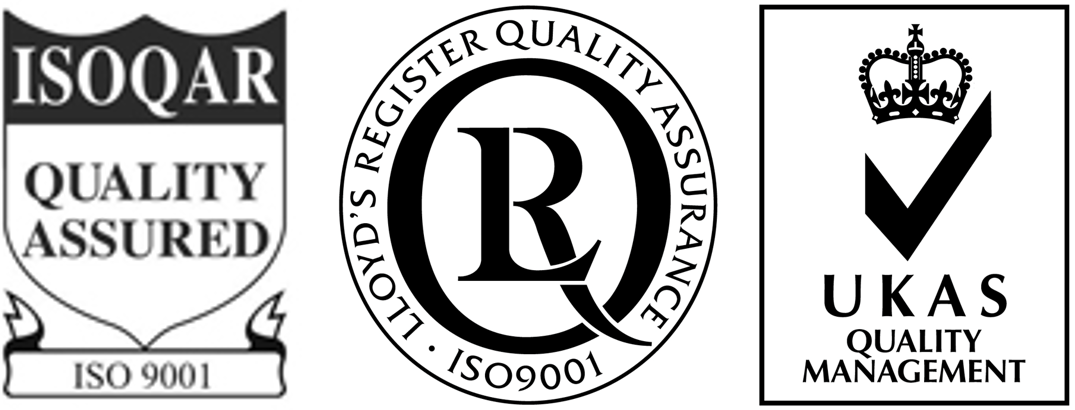BacPAK6 sec+载体昆虫杆状病毒表达系统-BioVector NTCC质粒载体菌种细胞蛋白抗体基因保藏中心
- 价 格:¥89500
- 货 号:BacPAK6 sec+
- 产 地:北京
- BioVector NTCC典型培养物保藏中心
- 联系人:Dr.Xu, Biovector NTCC Inc.
电话:400-800-2947 工作QQ:1843439339 (微信同号)
邮件:Biovector@163.com
手机:18901268599
地址:北京
- 已注册
BacPAK6昆虫杆状病毒表达系统-BioVector NTCC质粒载体菌种细胞蛋白抗体基因保藏中心
Product Description
BacPAK6 sec+ linearized baculovirus DNA is the latest baculovirus expression system to come out of the OET labs. By taking the original BacPAK6 system and genetically modifying it, BacPAK6 sec+ is able to increase the yield of recombinant protein and the ease of harvesting.
BacPAK6 sec+ contains a deletion of the chitinase gene (chiA) from the original BacPAK6 viral backbone.
Chitinase has been shown by both confocal and electron microscopy to locate to the endoplasmic reticulum, where it is densely packed in a paracrystalline array, which severely inhibits the function and efficacy of the secretory pathway. By deleting the chiA, secretion of target proteins into the cytoplasm is increased, greatly enhancing the yield of harvestable recombinant protein.
The concept of deleting the chiA gene came after the success of the flashBAC™ platform that utilizes the same genetic deletion for increased recombinant protein yield. To find out more about the flashBAC™ system, click here.
BacPAK6 linear DNA is the original convenient, highly efficient reagent for generating recombinant baculovirus expression vectors. It comprises a modified Autographa californica nucleopolyhedrovirus (AcMNPV) genome with lacZ inserted in place of the native polyhedrin gene coding region for convenient blue/white selection.
Digestion of BacPAK6 DNA at three sites with Bsu36I removeslacZ and part of ORF1629, which is an essential AcMNPV gene. The linear virus DNA is unable to initiate a replication cycle in insect cells.
Co-transfection of insect cells with linear BacPAK6 DNA and a compatible transfer vector containing the complete ORF1629 and a foreign gene of interest results in recombination and restoration of the circular, infectious virus genome. Over 95% of the virus derived from the co-transfection comprises recombinant virus. Usually, a single plaque assay titration incubated with X-gal and counterstained with neutral red is sufficient to differentiate parental blue from recombinant white (colourless) plaques. These can be readily isolated and amplified to working stocks of purified recombinant virus in a few days.
The BacPAK6 sec+ reagent from OET Ltd comprises transfection-ready, linearized (Bsu36I-digested) virus DNA. It is available in 5, 24 and 96 reaction packs. For bulk purchases, please contact us on info@oetltd.com.
We offer a promotional deal on all BacPAK6 products to include a free 3 reactionflashBAC™ kit to help you decide if making the switch is the right choice for your lab.
The BacPAK6 system
The efficiency with which recombinant viruses could be recovered was improved by the addition of a unique restrictionenzyme site (Bsu36I) at the polh locus. Linearization of the virus genome prior to homologous recombination reducedthe infectivity of the parental virus DNA; recombinant virus genomes become circular and can replicate. This resultedin the recovery of about 30% recombinant virus. LacZ was then introduced into the parental virus genome to replacethe polh coding sequence, resulting in 3 Bsu36I sites at the polh locus12. Triple digestion of the resulting virus genomewith Bsu36I removed a section of virus DNA coding for lacZ and part of the essential gene ORF 162912, resulting in a linear virus DNA (BacPAK6) that cannot replicate in insect cells. Co-transfection of insect cells with linearised BacPAK6DNA and a transfer plasmid with foreign gene under control of polh, creates recombinant virus DNA in which ORF1629is restored and the recircularised DNA can replicate to produce recombinant budded virus12. This reduced even furtherthe chance of parental virus replicating and resulted in an increase in the recovery of recombinant virus to more than90%*. It also introduced a useful blue-white selection system – with non-recombinant virus giving rise to blue plaquesand recombinant virus to white plaques. It was thus easier to achieve purified virus with a single round of plaquepurification.*It is not 100% because it is impossible to ensure that every molecule of DNA is triple-digested and anycircular DNA remaining can replicate and produce non-recombinant virus.The triple-cut linear BacPAK6 virus DNA is available from OET (see page 5). We are also pleased to offer BacPAK6-Sec+, which has a deletion in the chitinase gene to aid expression of membrane targeted and secreted proteins.Practical techniques to make recombinant BacPAK6 viruses are included in this User Guide.Despite this fine tuning and optimisation of the system, a number of steps are still required to make recombinantbaculoviruses, thus making it more time consuming than bacterial expression systems and less amenable to scale upand high throughput automation.
Baculoviruses
Baculoviruses are insect viruses, predominantly infecting insect larvae of the order Lepidoptera (butterflies andmoths)1. A baculovirus expression vector is a recombinant baculovirus that has been genetically modified to contain aforeign gene of interest, which can then be expressed in insect cells under control of a baculovirus gene promoter. Themost commonly used baculovirus for foreign gene expression is Autographa californica nucleopolyhedrovirus(AcMNPV)2,3. AcMNPV has a circular, double-stranded, super-coiled DNA genome (133894 bp; Accession NC_001623)4,packaged in a rod-shaped nucleocapsid. The nucleocapsid can be extended lengthways and thus the DNA genome canaccommodate quite large insertions of DNA. The AcMNPV genome forms the basis of the flashBAC™ or BacPAK6 DNAprovided in this kit.AcMNPV has a bi-phasic life cycle (Figure 1) resultingin the production of two virus phenotypes: buddedvirus (BV) and occlusion-derived virus (ODV). BVcontain single, rod-shaped nucleocapsids enclosed byan envelope, derived from the plasma membrane ofinsect cells, containing a membrane-fusion proteinGP64 (Figure 2 A). GP64 is acquired when thenucleocapsids bud through the host cell plasmamembrane5. The BV form of the virus is 1000-foldmore infectious for cultured insect cells6, compared tothe ODV phenotype, and is responsible for cell-celltransmission in the early stages of infection7. It is theBV form of the virus that delivers the foreign gene intothe host insect cell for expression.Figure 1. A schematic representation of the bi-phasic life cycle ofbaculoviruses resulting in budded virus and occlusion-derived virus.P/PDV = polyhedra with occlusion derived virusECV = extracellular virus = budded virusIn the later stages of the infection cycle large numbers of occlusion bodies (OB) or polyhedra are formed inside thenuclei of cells (Figure 2 B & C). These consist of multiple rod-shaped nucleocapsids enclosed within an envelope,acquired de novo in the nucleus of cells, which then become embedded within a para-crystalline matrix of theOB/polyhedra. The major component of the OB matrix is comprised of a single protein – polyhedrin (29 kDa)8,9, whichis produced by the powerful transcriptional activity of the polyhedrin gene (polh) promoter13. OBs protect the virus andallow them to survive between hosts in the environment. Most baculovirus expression vectors do not producepolyhedra (see below for details), because the coding sequence for polyhedrin has been replaced by that of the foreigngene being expressed under control of the polh promoter. This is a useful safety feature because recombinant viruscannot persist in the environment in the absence of polyhedra.
flashBAC™ is the easiest and the quickest baculovirus protein expression system available. The flashBAC™ expression vector system is a new platform technology for the production of recombinant baculoviruses, genetically optimized for producing 100% recombinant virus in a single step thus eliminating the need for plaque purification or other screening systems. The genetic optimization not only prevent parental virus from replicating, but also significantly increases protein yield. The flashBAC™ expression system has been specifically developed for optimal protein production in insect cells. The flashBAC™ DNA is a baculovirus genome that has been genetically optimised to function as a recombinant protein expression vector. The system offers high levels of protein expression, is easy to use and is also back compatible with all transfer vectors based on homologous recombination. In this way the flashBAC™ system has become the expression of choice for those needing optimal protein expression in insect cells, and increasingly in mammalian cells via the BacMam system.
There are a series of flashBAC™ expression vectors, each varying in the number of genes deleted from the baculovirus genome to suit expression of different proteins. These Selection Boxes enable you to try out different versions of flashBAC™ in one convenient kit: Selection Boxes contain either a single 3 reaction kit of flashBAC™, flashBAC GOLD and flashBAC ULTRA (Box 1) or a single 3 reaction kit of flashBAC, flashBAC GOLD, flashBAC ULTRA and flashBAC PRIME (Box 2). The original flashBAC expression vector is a good choice for projects where the gene to be expressed is likely to be simple and expressed in the cytoplasm or nucleus. flashBAC GOLD is enhanced by the deletion of the chitinase and cathepsin protease genes. It provides superior levels of expression for any protein that is destined for secretion or to be inserted in the membrane, or for any protein that might be particularly liable to degradation. flashBAC ULTRA contains deletions of the chitinase and cathepsin genes, as above, but also deletions of the p10, p74 and p26 genes and provides the best choice for the most difficult to express proteins; uitable for cytoplasmic, nucleus, secreted and membrane proteins. flashBAC PRIME contains no gene deletions and has proven useful for the release and subsequent purification of intracellular VLPs and protein complexes. If it is a starter kit you are after, baculoCOMPLETE is the perfect choice. This kit contains all the components needed to get started with recombinant protein expression in insect cells.

The flashBAC system is a new platform technology for the production and isolation of recombinant baculoviruses.Importantly, flashBACTM has been designed to remove the need for separation of recombinant virus from parentalvirus, so no plaque-purification steps are needed. The production of recombinant virus has been simplified to a singlestage procedure that is fully amenable to high throughput manipulations – multiple recombinant viruses can be madeat one time using 24 well plates either manually or using simple robotic systems.The flashBACTM technology builds on the BacPAK6 technology. At the heart of the new system is an AcMNPV genomethat lacks part of the essential gene ORF 1629 and contains a bacterial artificial chromosome (BAC) at the polh locus,replacing the polh coding sequence. The essential gene deletion prevents virus replication in insect cells and the BACallows the virus genome to be maintained in bacterial cells as a bacmid. Circular virus DNA is isolated from bacterialcells and purified ready for use in flashBACTM kits and co-transfections to make recombinant viruses.A recombinant baculovirus is produced simply by co-transfecting insect cells with flashBACTM DNA and a transferplasmid containing the gene to be expressed (Figure 4). Homologous recombination within the insect cells (1) restoresORF 1629 allowing the recombinant virus to replicate (2) removes the BAC sequences and (3) inserts the foreign geneunder control of the polh promoter (or other promoter chosen that is in the transfer plasmid).The recombinant virus budded virus is harvested from the co-transfection medium and becomes the seed stock (P0) ofrecombinant virus. No selection systems are needed. However, the virus stock is not homogeneous in the way plaquepurifiedvirus is and for very large scale applications or for work that may be taken through regulatory processes, werecommend a single round of plaque-purification. For most purposes, however, plaque-purification is not necessary.This single step procedure greatly facilitates the high throughput production of baculovirus expression vectors viaautomated systems (Figure 5). However, it is just as useful for a research lab making one or two viruses in individualdishes. It is very useful for the novice.The flashBACTM system is back-compatible with all transfer plasmids based on homologous recombination at the polhlocus. The OET website has details of most of these and they include single, dual, triple and quadruple expressionplasmids, those with purification tags at N and C termini, and other promoters including p10, p6.9, ie-1 and, CMV (formammalian cells). It is not compatible with pFASTBacTM vectors and the Bac-toBac® system14.
Since the launch of the original flashBACTM DNA, we have made further modifications to help express difficult to expressproteins and the different flashBACTM variants are now described:flashBAC™ Backbone virus DNA has a chiA deletion, which prevents production of virus chitinase. Thisenzyme blocks the secretory pathway and its absence helps improve membrane andsecreted protein production15-18.flashBAC GOLD Backbone virus DNA has gene deletions for chiA and v-cath19. This avoids production ofchitinase and cathepsin, a viral protease that may otherwise degrade susceptible targetproteins. See Figure 6.flashBAC ULTRA Backbone virus DNA has deletions of chiA, v-cath and p10/p26/p74. Deletion of p10 resultsin delayed cell lysis (particularly noticeable) in TnHi5 cells and thus can extend proteinproduction times. It also reduces the metabolic burden on the cell of producing high levelsof P10 protein.flashBAC PRIME No gene deletions in the virus back bone. Useful if the proteins being expressed formcomplexes inside the cytoplasm or nucleus that need to be purified. We find that therelatively early cell lysis associated with PRIME makes it easier to purify these complexese.g. VLPs.Advantages of the flashBACTM system: Simple to use One step procedure that does not require plaque-purification (Figure 4) Amenable to making many viruses simultaneously – manually or using a robot in 24 well plates (Figure 4, 5) Amenable to high throughput systems Maximise secreted or membrane targeted proteins (Figure 6) Maximise difficult protein production Maximise VLP production and release from cells Back compatible with a large range of transfer plasmids Now compatible with Gateway® cloning system

QuickGuide:
Provided in kit:
flashBAC™ DNA (use 100ng [5µl] per co-transfection 20ng/µl)Positive-control vector DNA (use 500ng [5µl] per co-transfection 100ng/µl)To be provided by the user:• Transfection reagent – reagents tested and found to be successful: baculoFECTIN II (OET),Lipofectin® (Invitrogen), FuGENE 6 (Promega), GeneJuice® (Novagen).• Transfection media (e.g. Grace’s Insect Basal Medium or TC100).• 35mm tissue culture treated dishes seeded with Sf21 (1.4 x 106cells/2mls), or Sf9 (1x106cells/2mls) per dish.• Prepare 2 hours before transfection.• Sterile baculovirus transfer vector DNA containing gene of interest (500ng per cotransfection).Procedure: (as recommended with the use of baculoFECTIN II, other reagents may differ)A) Prepare DNA transfection complexes.1. Warm baculoFECTIN II to RT and vortex gently2. Place 100µl transfection medium in a sterile tube.3. Add 5µl (100ng) flashBAC™ DNA. Tap tube to mix.4. Add 5µl (500ng) plasmid transfer vector. Tap to mix.5. Add 1.2µl of baculoFECTIN II. Tap to mix.6. Incubate at RT for 15-20 minutes.B) Add DNA complexes to cells.1. Remove 1ml medium from each dish required2. Add baculoFECTIN II:DNA complex mixture drop-wise to different areas of thedish.3. Incubate 16-24 hours4. Add 1ml fresh medium to each culture dish.5. Incubate for 4 days at 28°C (5 days from start of co-transfection).C) Harvest P0 virus stock.1. Aspirate medium from dishes and remove cells @ 3000 rpm/10 mins2. Amplify virus stock using recommended protocols (www.oetltd.com) Related OET products:Transfection Reagents:baculoFECTIN II 150µl and 1mlflashFECTIN: 300µl and 1 mlTransfection medium:Expression System: 20ml and 100ml transfection mediaVirus titration tool:baculoQUANT all-in-oneSf21 (plaque assay cells)Plaque assay service work
Cell culture media:Expression systems insect cell culture media
Manual说明书:
Contact BioVector NTCC Inc.
- 公告/新闻




